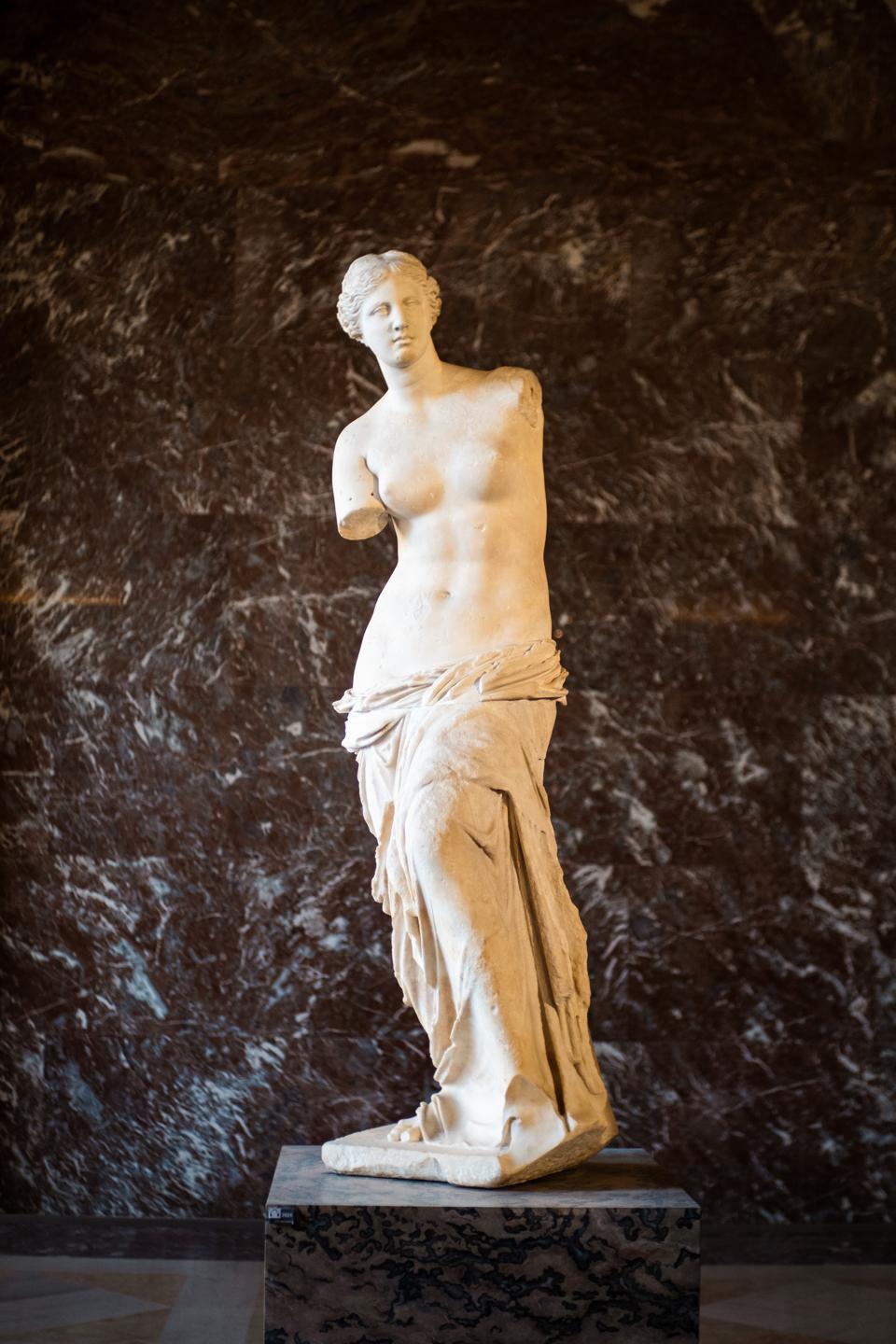The Venus de Milo

The Venus de Milo, also known as Aphrodite of Milos, is a famous ancient Greek sculpture that is on display at the Louvre Museum in Paris. This white marble statue was created around 100 BC. BC and is considered one of the masterpieces of classical Greek art.
The Venus de Milo is approximately 2.02 meters tall and represents a goddess of beauty and love. The statue is shown standing, leaning slightly forward, with its weight mainly on the right leg. Her arms are missing, but it is widely believed that she held an object in her right hand, possibly an apple, a symbol of the goddess Aphrodite.
The sculpture is notable for its beauty and realism. Anatomical details, such as muscles and folds of clothing, are finely sculpted, giving the statue an almost life-like appearance. The Venus de Milo is also known for her calm and serene expression, which exudes an aura of grace and femininity.
The discovery of the Venus de Milo took place in 1820 on the island of Milos, Greece. She was found by a peasant who was digging in a field. The statue was later acquired by the French government and became a centerpiece of the Louvre Museum's collection.
The Venus de Milo is one of the Louvre's most popular attractions and attracts millions of visitors every year. It is exhibited in a special room of the museum, surrounded by explanatory panels that tell its story and its importance in the history of art. Visitors can admire the statue up close and appreciate its timeless beauty.
If you visit the Louvre Museum, don't miss the opportunity to see the Venus de Milo. It is an extraordinary work of art that testifies to the talent and mastery of the sculptors of ancient Greece.
© ChatGPT 3.5
1. Make sure to visit Venus de Milo early in the morning or late in the day to avoid crowds.
2. Take time to admire the details of the sculpture, such as the folds of clothing and sculpted muscles.
3. Read the explanatory panels to learn more about the history and importance of the Venus de Milo.
4. Take photos of the statue from different angles to capture its beauty in all its aspects.
5. Take the opportunity to explore the other treasures of the Louvre Museum, as it is full of incredible works of art.